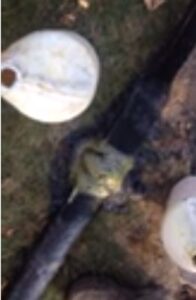A well screen is placed below the well casing in the well and prevents sediment from entering your well. The well screen can get clogged due to sediment buildup and slime (bacteria). Iron bacteria are present in water and form slime on the well screen, which inhibits water flow. The clogging of the well screen causes the recovery rate to decrease and reduces the flow rate. Hence, it is crucial to clean the well screen periodically.
In this article, we are going to discuss how to clean a well screen.
How to Clean a Well Screen?
Check the state laws before starting well screening. Some states don’t allow well owners to carry out the maintenance tasks. You may need to hire a licensed state contractor for this task.
Things you will need
- Granular Acid (Muriatic, Phosphoric or Sulfamic)
- Measuring Cup
- Protective Gear
Step 1: Opening the Priming Plug Port
First of all, locate the priming plug port of the well. It is usually located before the pump inlet. If you can’t find it, refer to the well completion report. All the ports and other details are mentioned in the blueprints of the well.
Step 2: Adding the Acid

Wear protective gear such as a face mask, safety goggles, and gloves. Measure half or a full cup of the acid and pour it down the plug opening. The granules will dissolve slowly and gradually reach the well screen. Granules release slowly and are safe to work with it as compared to liquid acids.
Step 3: Wait for the Acids to Work
The acid will not work instantly. It may take up to 12 hours for the well screen to clear off. Once the screen is unclogged, you will notice a visible difference in the flow rate and refilling rate. If there is no increase in the flow rate, there may be some other problem with your well.
FAQ
Which is the best protective equipment for cleaning the well screen?
Base camp’s face mask is best for cleaning well screens. DeWalt’s safety goggles are recommended for well cleaning and working with other tools. I prefer using these gloves while handling acids.
I lost my well completion report? Where can I get it?
If you lost your well completion report, you can get a copy from your well contractor. Records about well drilling are also maintained by your state’s health division or State Engineer’s office.
What are the best materials for a well screen?
Well screens are made from a variety of materials. You can choose from crude-hand contrivances to highly efficient and long-life models made on a machine. The common materials used for making well screens include stainless steel and PVC.
What are the different designs of a well screen?
You can go for a continuous slot screen, torch cut screens, milled slots, wire wraps, bridge slot, and shutter screen design. Each design has a different efficiency level and is picked according to the dynamics of your well. It is best to go with the recommendation of your well driller.
What to do if the flow rate doesn’t increase after cleaning the well screen?
Suppose you don’t notice a visible difference in the flow rate after cleaning the well screen. In that case, I suggest you go towards other methods like checking the well pump, groundwater water level, and water filters/softeners. You can also install a constant pressure valve or get a pressure booster pump to increase water pressure.
Final Words
It is better to try inexpensive remedies before going for costly repairs and well rehabilitation. Make sure you follow all the safety precautions and local laws while dealing with private wells.
